Hebrew: Har HaZeitim / Arabic: Jebel ez-Zeitun, Jebel et-Tur
Coordinates: 31°46′39.56″N 35°13′56.85″E / Elevation: +2477
At 2670 feet, the Mt. of Olives is the highest point of the hills and valleys that collectively form “Jerusalem.” In ancient times, Har HaZeitim (Hebrew, “Mount of Olives”) was the summit of the Jericho road, giving travelers to Jerusalem their first view of the Holy City. Other roads along the ridge to the north and south connected a number of smaller town, such as Bethany, to Jerusalem, as well.
The Mount of Olives has had special significance for every culture that has inhabited the region. Settlements and graves reaching back to the Chalcolithic Era have been discovered on its slopes. In ancient times, portions of the mount were cultivated with olive groves (hence, the name); other portions were used for burials – a practice that continues to this day.
The southern slope of the mount is an especially popular burial place for faithful Jews due to its proximity to the Valley of Jehoshaphat which lies at the base of the mount. Tradition holds that the resurrection of the dead on Judgment Day will begin at that valley (Joel 3:1-16), which is also known by the name, “Kidron.” Today, there are an estimated 150,000 graves on the slope, having been used continuously as cemetery for over 3,000 years, making it one of the largest cemeteries in Israel, if not in the world.
For Christians, the Mount of Olives is best remembered as the gathering place for Jesus’ disciples, both when Jesus entered Jerusalem on Palm Sunday and when He ascended to heaven 40 days after His resurrection. It was also the place where Jesus wept over Jerusalem, expressing His sorrow for the City that killed the prophets and the Son whom the Father sent to redeem it. The prophet Zechariah says the mount will be split “on the Day of the Lord” (14 1-9), which Christians hold to mean the day that the Lord returns.
________________
Dominus Flevit (pilgrim site)
Coordinates: 31°46′41″N 35°14′30″E
We’ll be stopping at the compound of the Roman Catholic church of Dominus Flevit (“The Lord Wept”), named for an incident found in the Gospel of Luke, as He approached the city from Bethany on Palm Sunday:
19:41 As Jesus approached Jerusalem and saw the city, he wept over it 42 and said, “If you, even you, had only known on this day what would bring you peace—but now it is hidden from your eyes. 43 The days will come upon you when your enemies will build an embankment against you and encircle you and hem you in on every side. 44 They will dash you to the ground, you and the children within your walls. They will not leave one stone on another, because you did not recognize the time of God’s coming to you.”
– Jesus,
Luke 19:37-44
The terraces of Dominus Flevit offers a unique vantage point to consider a number of theological and historical events connected on this side of the Kidron Valley that divides the city of Jerusalem from the Mount of Olives.
In the time of Christ, an arched walkway spanned the gap from the Eastern (or Golden) Gate of the Temple Mount to an area on Olivet where the red heifer was slaughtered on Yom Kippur (the Day of Atonement – see Numbers 19 & Leviticus 4) for purification of the High Priest. This range of hills is also where Rome headquartered its legions for the final siege against Jerusalem in 70AD, and from which, according to the Jewish historian, Flavius Josephus, saw a number of supernatural manifestations prior to the final fall of the city.
Based on Luke 24:50-52 and Acts 1:1-11, Christian traditions places the location of Jesus’ ascension into heaven, and His subsequent return, on the Mount of Olives.
Ezekiel 14:1-14 tells us that the Lord will descend to this mount on the final Day of Judgment, splitting it in two and releasing a torrent of water that will flow from the Temple Mount to the Dead Sea, bringing the Dead Sea to life.
________________
Mary’s Tomb (pilgrim site)
Coordinates: 31°46′48″N 35°14′23″E
At the base of the Mount of Olives across from the entrance to the Garden of Gethsemane is a 14th century church built over a 1st century cemetery nestled amongst some ancient caves and a grotto. It is purported that one of the caves (“grotto”) is the original resting place of Mary, the mother of Jesus. Though other traditional resting places for Mary’s body can be found in Turkey, tradition for this location is very old and respected by all strains of Christendom and even Muslims, who revere Mariam, mother of the prophet Isa (Jesus), as holy.
Tradition states that Mary died of natural causes and was buried in the grotto. However, when the grave was opened a few days later at the request of the Apostle Thomas who wanted to pay respects to the mother of our Lord, all that remained was her cincture (“sash” – though other traditions say it was her shroud) – giving rise to the dogma that Mary’s body was assumed into heaven on the third day following her burial. Numerous churches have been built on this site over the centuries. The current church is overseen jointly by the Greek Orthodox Church of Jerusalem and the Armenian Apostolic Church of Jerusalem.
________________
Garden of Gethsemane / Church of All Nations (pilgrim site)
Coordinates: 31°46′45.22″N 35°14′22.66″E
At the foot of the Mount of Olives as one approaches Jerusalem from the east, we come to an ancient garden that once housed an olive-oil press, “gat shemanim” in Hebrew, that somehow becomes Gethsemane. In the garden, we will pass olive trees, as we approach the 12 domed beautiful Church of All Nations built as an international effort in 1924. Near the altar in the Church, is a large, flat stone on which tradition says, Jesus prayed with blood and tears, asking His Father if there might be some other way to accomplish what was about to be done (Luke 22:42-44).
Some of the trees we pass in the Garden are said to be over 2000 years old. Two thousand years! If the estimate is accurate, these trees were present when the Father responded to His Son by sending an angel to comfort Him (Luke 22:43). In this garden, with faith’s eyes, we see God-in-the-flesh in rawest form: committed, without a doubt, to the action for which He came to earth (1 Timothy 1:15, Romans 5:8, John 3:16-21), but nonetheless stripped bare as a mere mortal about to be crushed by the full weight of sinful humanity (2 Corinthians 5:21; Galatians 3:13; Colossians 2:9).
It is no coincidence that our journey to death began in a garden, and that the gift of new life from God starts there, as well. All of us treat Jesus in the same way that the disciples did in the garden – every one of the disciples, including Judas – at varying points in our life (Isaiah 53:6; Matthew 26:31). The wonder is, He continues to offer His intercession for us as our mediator before the throne of God (1 Timothy 2:5-6).
View the gallery at the Mount of Olives:
Categories: Locations
Tags: Mount of Olives.
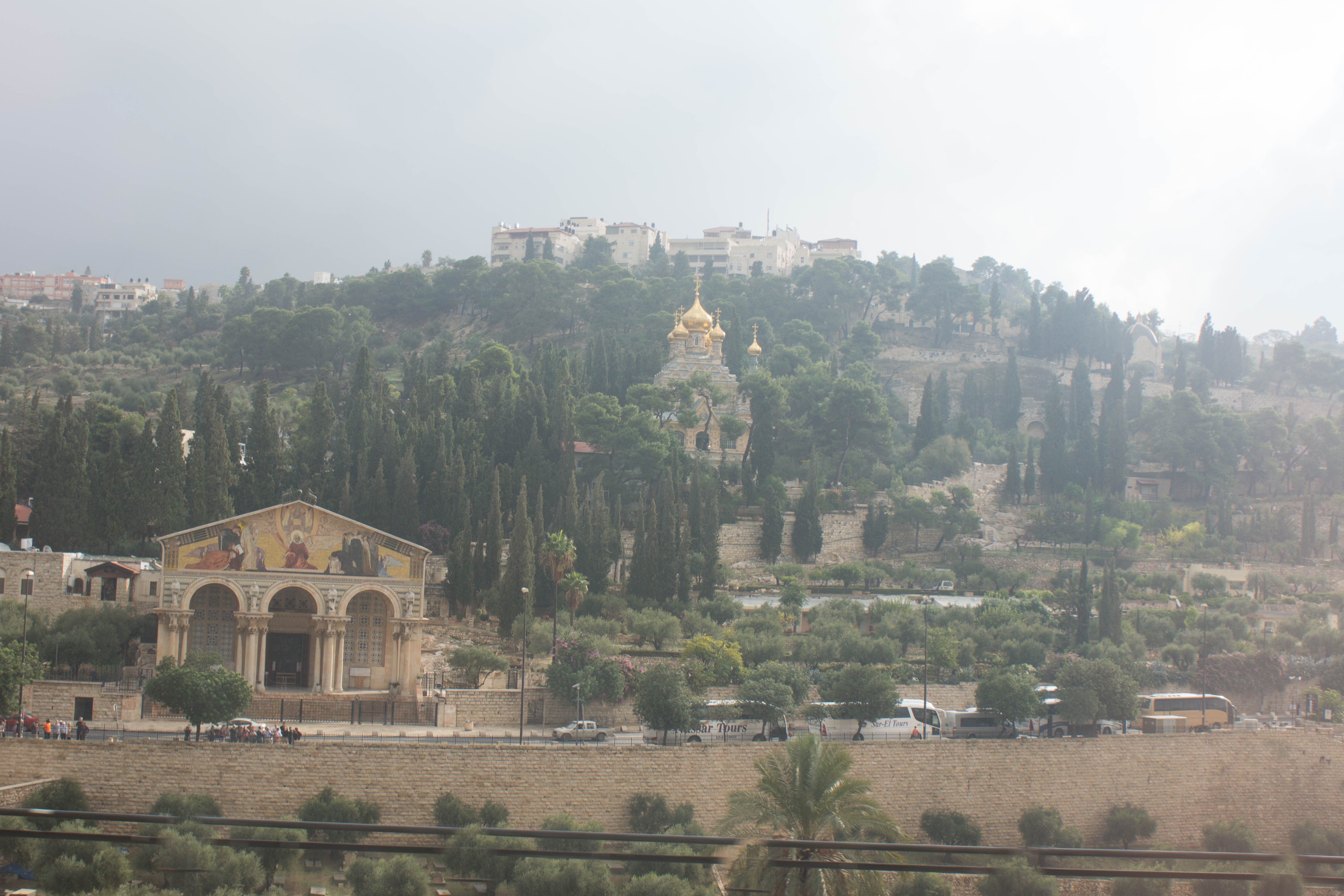

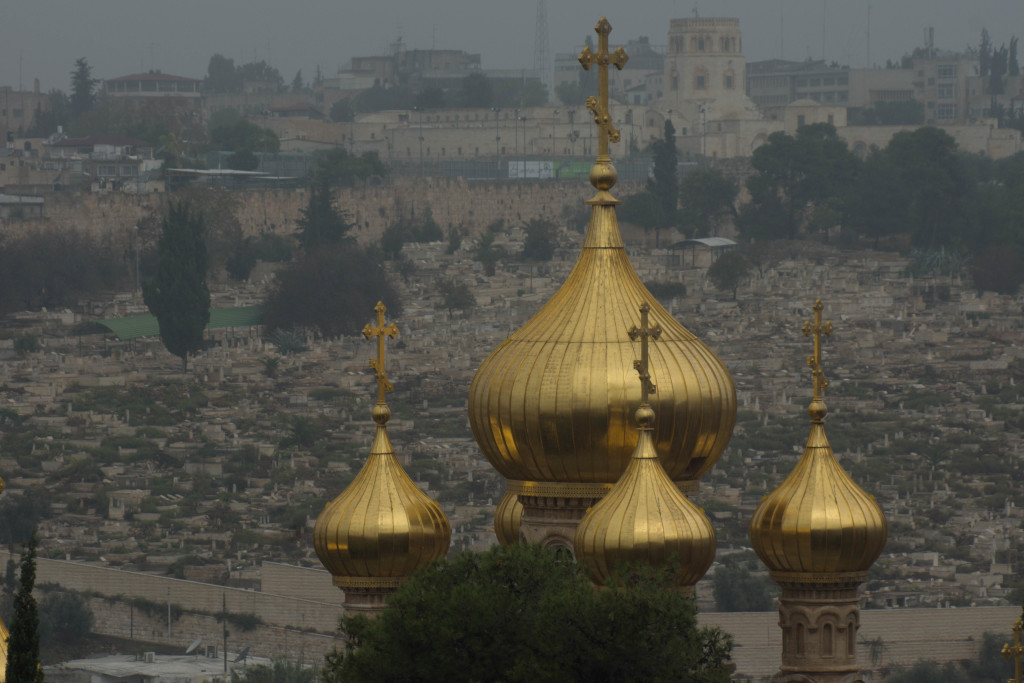

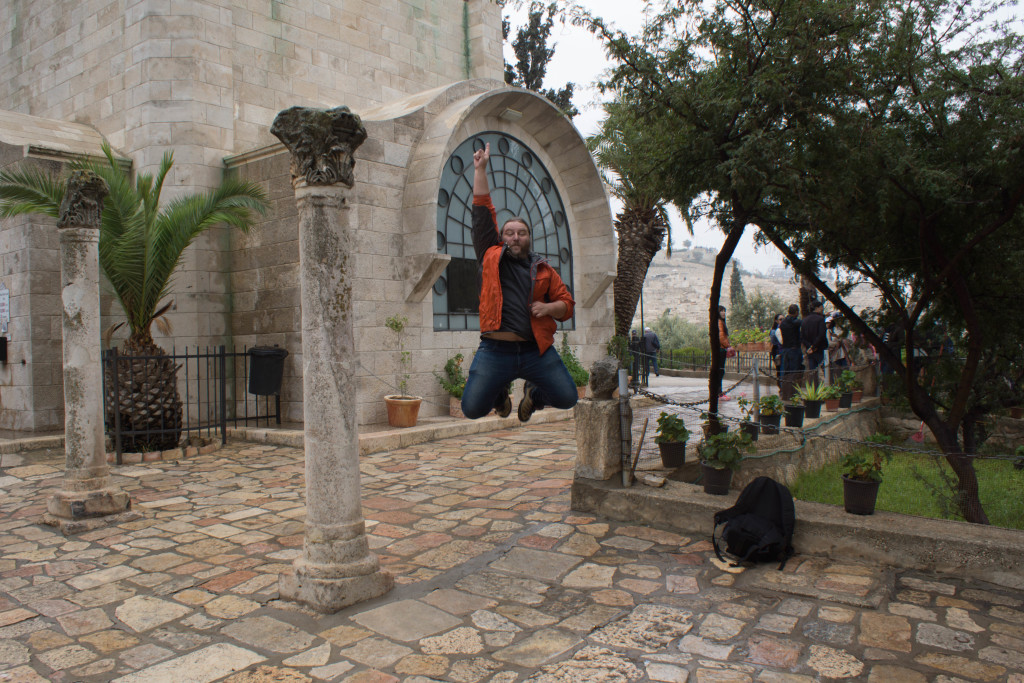
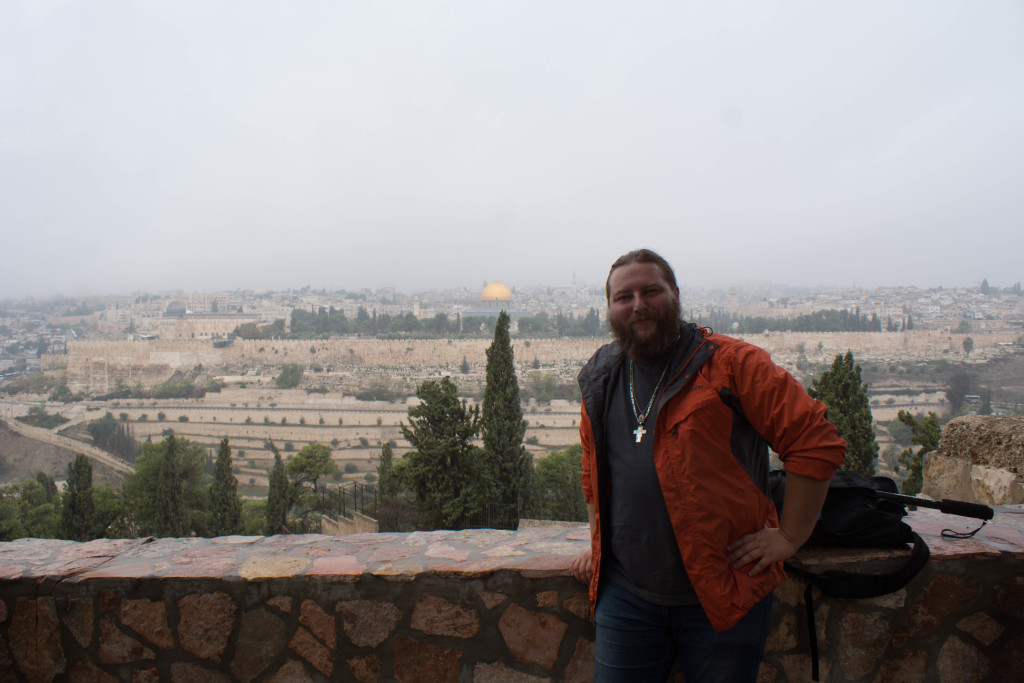

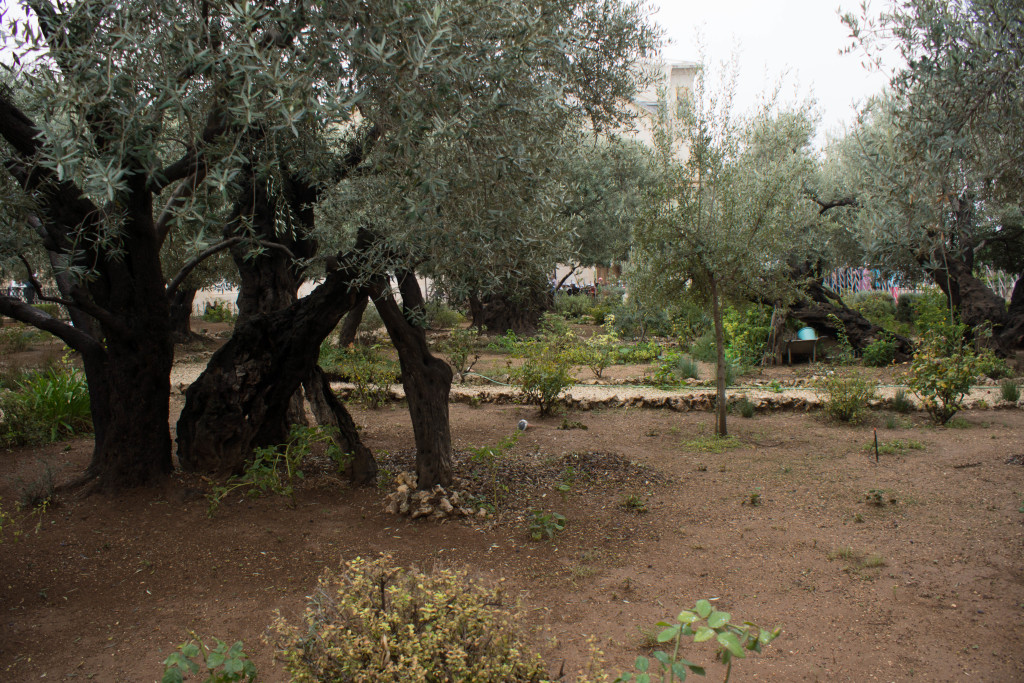

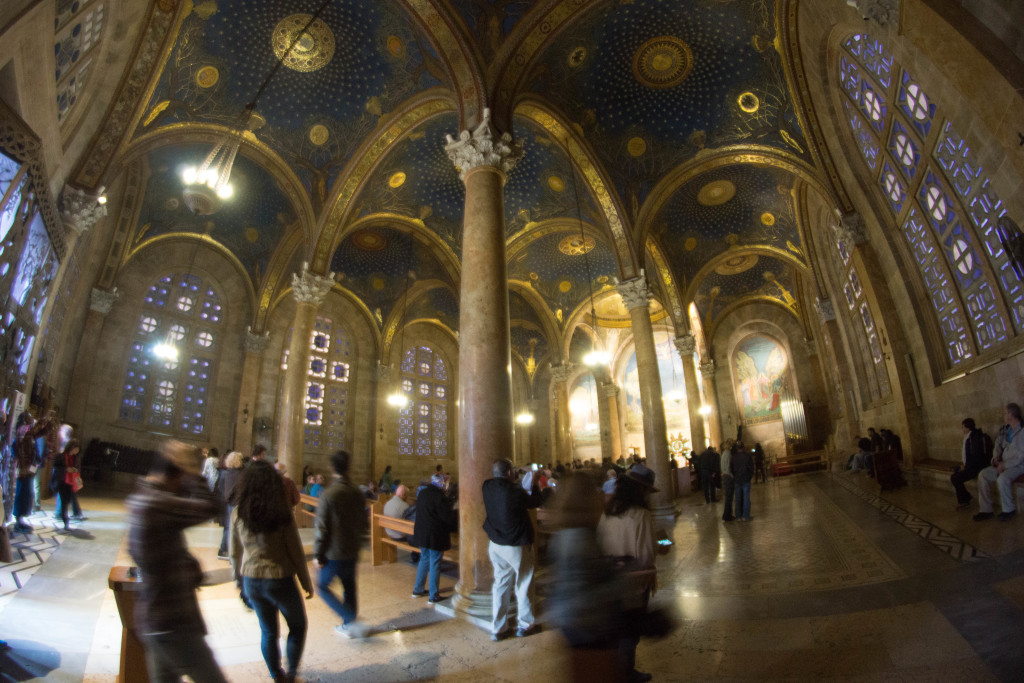


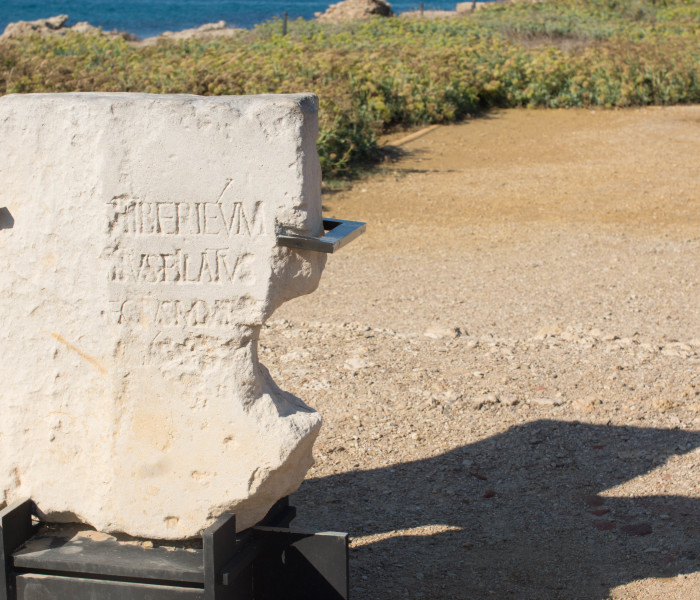
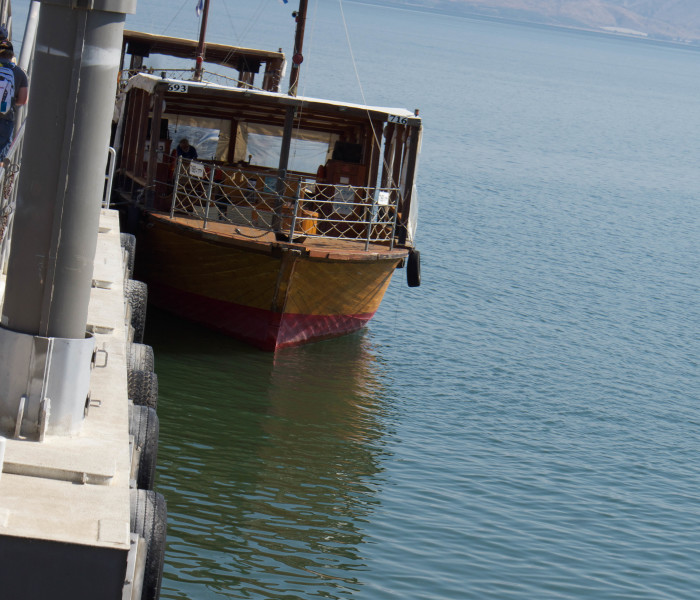
Comments are closed.